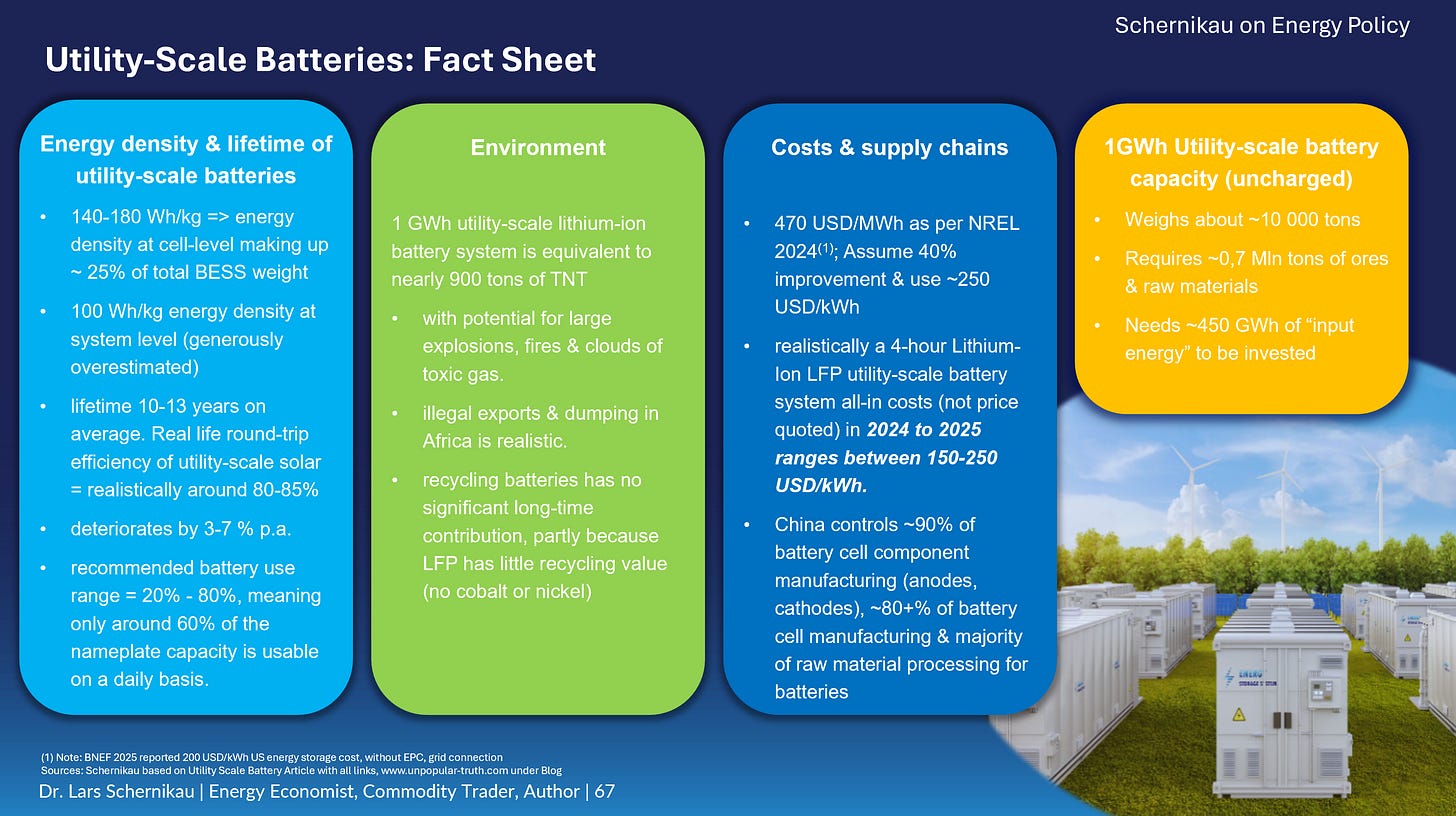The Battery Storage Delusion… What 35 Million Tons of Effort Buys You
by Lars Schernikau
We are constantly told that the future of energy will be clean, green, and battery powered. Wind and solar will produce the power, and batteries will store it. Simple, right?
Unfortunately, reality is not so accommodating.
After years of studying energy systems, commodity markets, and the hard data behind the “so-called energy transition,” I feel compelled to challenge the increasingly popular, yet deeply flawed, narrative around utility-scale batteries systems.
The question is not whether batteries work. They do. The real question is whether they can physically scale economically in an environmentally friendly way, to provide grid-level backup for intermittent and weather dependent wind and solar.
Hardcore facts and figures
Once you dig into the numbers, the answer is an uncomfortable one:
- for the production of a 1 GWh utility-scale lithium-ion battery system you would require roughly 700,000 tons of raw materials to be mined, transported, processed, and assembled
- then you will have enough storage capability to power a city like Berlin for just ~30 minutes
and when charged, that battery roughly holds the same energy as ~900 tons of TNT posing a serious safety risk.
before storing a single kWh, the system demands a production energy input of ~450 GWh. That’s ~450 times more energy input than its rated storage capacity…a multiplier often ignored in public discussions.
Read more on my blog

Figure 8: Utility-scale battery fact sheet, Source: Schernikau
Now I ask you…
The world plans to build thousands of these systems, replacing them every 10–13 years. But no one seems to be asking these difficult questions:
- Where will we find the materials?
- How do we safely manage explosive fire risks?
- Can we really sustain this level of energy and environmental cost?
And perhaps most importantly: What are we actually achieving with all this effort?
We are replacing a stable, efficient, dispatchable energy system (fossil, nuclear, hydro) with a sprawling network of wind farms, solar panels, and short-lived batteries that require massive overbuild, complex backup systems, and enormous transmission infrastructure…all in pursuit of the mythological “net zero”.
This is not an energy transition. It is more of a costly detour.
In my latest blog post, I unpack these issues in detail, with references, figures, and unpopular truths many prefer not to face. The goal isn’t to criticize innovation but to make sure our investments and policies are grounded in reality, leading to a stable energy future for all.
Read the full blog post – The Pros and Cons of Utility-Scale Battery Storage
I welcome your thoughts…especially if you disagree. Real progress requires real dialogue. And right now, too much of the energy debate is happening inside an echo chamber.
Let’s change that.
Download the pdf here:
Pros-and-Cons-of-Utility-Scale-Battery-Storage-Lars
Posted by Lars Schernikau on Substack
Lars Schernikau is an energy economist, entrepreneur, commodity trader, book author, and proud member of the CO2 Coalition. He has worked at the Boston Consulting Group in the US and Germany and is co-founder, shareholder, and former supervisory board member of two Germany listed commodity companies.
